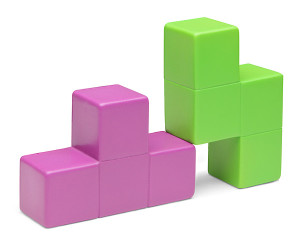A guest post by Victoria Morris.
When I think about characters and the relationships between them, I see a vast colorful representation of the story I’m trying to create. People, emotions, gifts, and flaws all trying to balance together on the edge of something amazing, if I can weave them all together.
It’s all very much like a tapestry for me, only I use words, character traits, and behaviors to weave my story instead of threads. Relationships and each character’s strengths, weaknesses, reactions and experiences creating the story’s overall tone and feel, are like the color and types of thread weavers use to bring a tapestry to life on a loom. Every connection is important. And all of them have different markers, and identities.
Each of these — characters, and single threads of my woven picture — can be defined symbolically the same: color, thickness, strength, positioning within the pattern. Whether it has corse, or fine build. What it is that connects them to their surroundings, the place in the image on the tapestry, and setting in a story.
Every thread has its own story, very like a character in a novel. A character’s backstory — the sum total of his experiences and how he reacts or is forced to react — are the shades of those colors that create the same feel as the words an author chooses to illustrate with. The shades of color can equal the genre or tone of the writing. If the character’s been jaded, the colors are stormy or dark. Grays are prevalent. But if the story is an upbeat, happy one, those shades become much whiter, much brighter.
On the loom, the heart of the picture or tapestry, joins the single thread to other single threads. At first, nothing much is visible in the weaving. A bland line not connected to the wall, that seems shapeless as well as mundane. But then something happens. Forms start to emerge. “Nothing” begins to look like something. By sprinkling in some love, adding a dash of creativity, and a sudden burst of magic, the resulting mixture forms something fantastic.
I almost always have feeling first, when I come to the loom of my writing tapestry. That feeling is represented in different ways, but usually first by color. Light or dark permeate my thoughts, as the character builds him or herself into my mind’s eye. From that color, I extrapolate other important data, the relationships with other characters — new or as yet unknown — begin to show themselves. It’s here in this step I sense a lot of who my characters are as people. What do they care about? What would they give everything for? Whom do they love… and why?
I interview them, and as they answer these questions and others, their shape appears. And with color and shape, I begin to see what it is that is unique to them, what it is that only they can bring to the story.
At the loom, separate threads soon expand to thick sections. Patterns emerge that can help an onlooker begin to understand what’s happening. Perhaps the sky has now appeared, or a rushing waterfall can be seen in the forming image. Huge chunks are missing, the perspective is not yet clear, but some of it is there, and it’s enough to know that each piece is special.
Here is where the reader is going to see me become animated, and excited. I know the players now. I see them, and I care deeply for them. Sometimes I care so much that they begin to haunt my dreams, sending me stories inside the story. I always write them down, because almost always they lead to more of the magic. Dream tales are the clues I need to know that my heart is truly vested in these people. And in their greater project. Now, I need to know where they’re going to take me.
And to do that, each character has to bring something of value to the table. Something important that will move this work forward on its projected path. The job of prominent main characters, or even the seldom seen ones, is to make sure the scenes move — expertly woven in, so they can bring a zap of inspiration when least expected.
It’s in secondary and tertiary characters that I like to deepen the imagery with. They fill in the blanks, and liven up the view. The story perspective widens, and everyone coming along for the ride, can see what I see. Together with the main character, be it their best friend, their spouse — however the story is being told — each character combines their colors, differences, strengths, loves, and weaknesses, to make the grand picture stand out. Just like when the weaver adds in the next sections of color, building up the scene with each new thread.
When our weaver sits back from their work, having spent many hours staring at single threads, small sections, grafting in a bigger picture. They’ll notice the image as a whole. Our weaver will see their mistakes. Smile at their favorite sections. Maybe they’ll nod at the parts they like the best. They may even tear sections out to reweave, retouching in places to make sure the colors blend well, so the scene comes to life.
Putting all of our hearts into our own work really shows here. Every weaver has a personal story that carries into the piece. Each of us have things that excite us… inspire us. People whom we love that enter our works be it by thoughtful intention or subconscious message. I truly believe every part of us comes to bear when we sit down and tell our story.
Creating good character composition and interaction is a specialized art, very much like a weaver at their loom. Making people come alive on paper, capable of eliciting emotion from a reader by that character’s actions and reactions is a true gift, and a tough job all-in-one.
We as writers weave our darlings every single day, one sentence — one thread — at a time. We take all the things we know, all the emotions we have, all the colors in our rainbow, and we push them through a loom of chapters, page breaks, and revisions to let the Tapestry in our mind’s eye come to life.
As an artist, I love being able to see my characters in living color, and I can create them visually in simple pencil sketches to surround and inspire me as the hard weaving work of actual writing progresses. I think we All have something special in our tool box that helps us do this.
When the loom lies quiet this last time, the onlooker sees the image of a woman with her hand outstretched pulling a drowning man to safety from the raging waterfall that had been visible near the beginning. Within that first perspective, and very little emotion invested, a viewer would see only water. But now, looking down, they see a life-saving gesture. And they are filled with the emotion that the weaver brought to their work. They are thrilled. They are relieved. They are happy, or sad. They hold onto their child’s hand tighter, feeling a rush of intensity that the water alone would not have given. The story in this work, couldn’t tell itself without those first threads, just as it couldn’t without the middle or the last ones. It takes time, love, patience, and more time, for the final vision to emerge. Just as it takes to give each written character and story, life and breath with words.
Each of our stories will grow, form, and find their way. Some of the greatest tools a writer or a weaver possesses, are patience and tenacity. And greater still, a love so strong and compelling in each of our hearts to work creatively at all. All of us here are word-weavers. And as such, we all have threads of imagination, and stretches of story on our own personal looms. I love seeing each character and story start with beginning perspectives of single thread ideas, get woven into the intricate Tapestries we each can and will create.
Victoria lives on the edge of a mysty magical forest in the Pacific Northwest with one husband, two daughters, a big white dog and one huge resident bald eagle that likes to circle over her house when she brings in the groceries. A lifelong artist and not quite as long writer, Victoria is building a universe inside her head that has taken form in a six book fantasy series, with a middle grade trilogy on the side. While illustrating the world and all its characters is always on her mind, she draws portraits in her spare time to relax. Find out more here.







